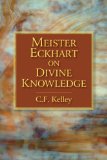What asexuals reveal about sex: They help expose the nuance of sexuality and desire
It may seem odd to look to an asexual for any insight on sex—but sometimes the absence of something can tell you a surprising amount about the thing itself. Besides, few people have spent as much time thinking critically about the subject as David Jay.
The 29-year-old star of “(A)sexual,” a documentary currently making the film festival rounds, has never desired sex, so he’s spent most of his life looking at the act with the scientific curiosity of an outsider. He’s largely responsible for staging asexuality’s coming-out party over the past decade, having founded in 2001 the Asexual Visibility and Education Network (AVEN). Ever since then he’s done TV, radio and print interviews, tirelessly fielding the same questions, bad jokes and weird looks. The mention of asexuality is typically met with blank, disbelieving stares.
Many react to the idea of someone having zero interest in sex as offensive. It goes against everything we understand about what makes the world go ‘round, so it’s an inherently confrontational concept. With this disbelief often come attempts to write asexuality off as a result of repression or sexual trauma (as of now there’s no evidence of that). It becomes even more complicated for people to understand when they discover all the variation within the asexual community. Jay tells me by phone, “There are asexual people who are dating, falling in love, getting married”—they just don’t have sex, although many do take pleasure in cuddling and kissing. Then there’s the category of “gray-A’s”—those who have very minimal interest in sex—which the documentary leaves out entirely to avoid confusing viewers (sorry, readers).
When you step into asexuality land, suddenly up isn’t down—it’s more like up, down and sideways all at once. It also brings up broader questions about desire and intimacy in general. As Angela Tucker, the documentary director, told me by phone, “I think these issues really tie to people who don’t identify as asexual.” She was inspired to make the film after stumbling across a Salon article about asexuality in 2005—it struck her as as great way to look at sexuality “through a different lens.” She laughs, “When you talk about asexuality you have to talk about what you’re not doing, right?” Read Article
By Tracy Clark-Flory









